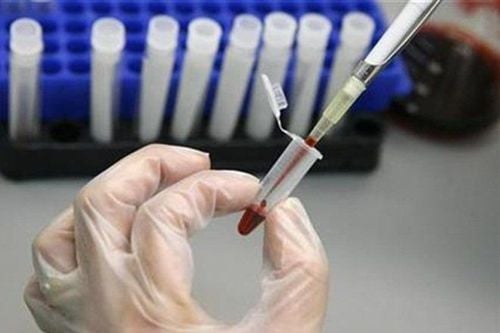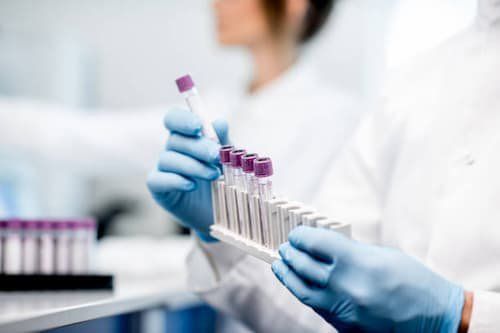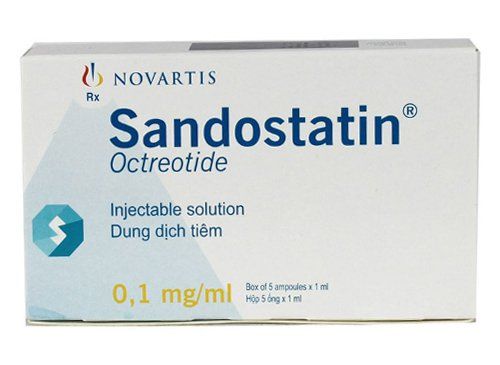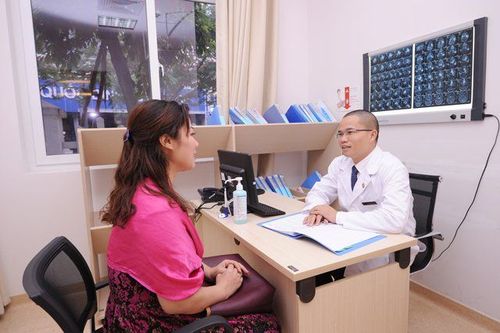This is an automatically translated article.
Acromegaly is very rare, symptoms change slowly. Early diagnosis is very important to have an appropriate treatment regimen, if treatment is delayed, patients often have serious complications and worse, death.
1. What is acromegaly?
Acromegaly is a disease when the skin and bones in the head, face, hands and feet grow larger than the proportions of the body. Acromegaly is a rare disease, with an incidence of 2.8 - 13.7 patients per 100,000 population.
The most common cause of acromegaly is pituitary adenoma. Because the pituitary gland is an endocrine gland located at the base of the skull at the base of the nose, it secretes very important hormones. In particular, growth hormone has a role in regulating and promoting physical development. But if the pituitary gland secretes too much growth hormone, it leads to abnormal growth of bones and soft tissues, causing the characteristic symptoms of acromegaly.
2. Symptoms and complications of acromegaly
Symptoms of acromegaly may include:
Enlarged hands and feet Face gradually changes, such as lower jaw and protruding forehead, large and enlarged nose, wide teeth The disease also causes some symptoms other symptoms such as headache; vision loss ; athritis; numbness and tingling of the fingertips; High Blood Pressure ; menstrual cycle changes; impotence in men; lower voice; sleep. You can suffer from arthritis, cardiovascular disease, and sleep apnea when you have acromegaly. Acromegaly usually progresses slowly, there are exacerbations alternating with normal intervals like no disease, so acromegaly can cause complications such as:
Osteoarthritis, thinning of bones. Enlarged heart, increased blood pressure leading to heart failure. Kidney stones, ureteral stones due to increased urinary calcium. Diabetes with insulin resistance Causes total hypopituitarism; optic nerve damage.

Bệnh to đầu chi có thể gây ra các biến chứng như thoái hoá khớp, thưa xương
3. Diagnosis and treatment of acromegaly
There are many methods to diagnose acromegaly, some typical methods to diagnose the disease are:
Examine the patient's body Do blood tests to measure the amount of growth hormone. The aim of treating acromegaly is to bring growth hormone levels back to normal; stabilize or reduce the size of a tumor in the pituitary gland; normal pituitary function. Treatment methods for acromegaly include:
Tumor surgery: This method is used when conservative treatment is ineffective or suspected to be malignancy, the disease is getting worse, there is damage to the optic nerve. Use of radiation therapy: Use when growth hormone levels continue to rise after surgery, recurrence of disease, patients who refuse surgery, difficult surgical conditions, or patients who have a poor response to treatment. Medical. After treatment for acromegaly, to limit the recurrence of the disease, patients need to:
Strictly follow the doctor's instructions and cooperate in the treatment process. Contact your doctor if you experience any side effects (nausea, dizziness, lightheadedness) instead of stopping on your own; Regular follow-up visits under the doctor's instructions to monitor the complications of the disease; All symptoms will not go away immediately. Therefore, the treatment of acromegaly requires a long time and patience of the patient.

Mục đích điều trị to đầu chi là đưa nồng độ hormon tăng trưởng về mức bình thường
Vinmec International General Hospital with a system of modern facilities, medical equipment and a team of experts and doctors with many years of experience in medical examination and treatment, patients can rest assured to visit. examination and treatment of acromegaly at the Hospital.
Please dial HOTLINE for more information or register for an appointment HERE. Download MyVinmec app to make appointments faster and to manage your bookings easily.
SEE MORE
Excess growth hormone GH How to use height growth hormone safely and effectively? The role of growth hormone (GH) testing













